 
|
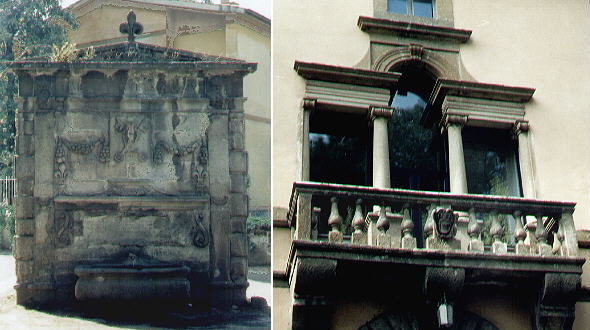 | ||
The sanctuary was built between 1470 and 1525, mainly at the initiative of Sixtus IV (1471-84)
and his nephew Julius II (1503-13). Their surname was Della Rovere, which means "of the oak" as rovere is another name for querce and their coat of arms shows
an oak with twined branches. So the large frieze on the top of the church shows an oak (between two
lions representing Viterbo), which is both a reference to the name of the sanctuary and to the Della
Rovere popes (in the background of this page you can see a relief showing an oak).
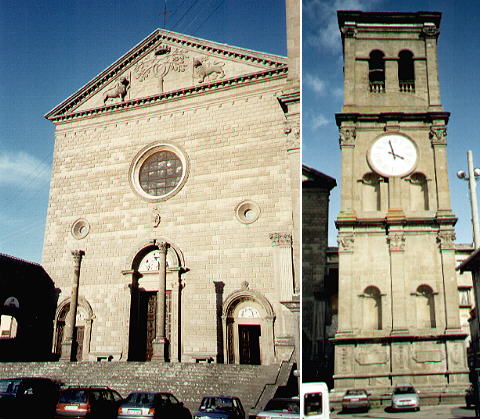 | ||
S. Maria della Querce is a fine Renaissance church with a very original fašade. Four columns add a solemn character to it. The imposing bell tower is detached from the church as in the cathedrals of Florence and Pisa. The artists involved in the design of the sanctuary came from Central and Northern Italy (Perugia, Fiorenzuola, Milan).
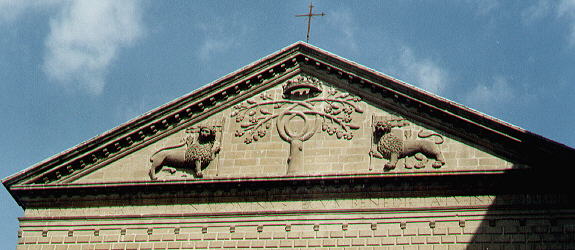 | ||
The central portal is a work by a local artist, while the terracotta is by Andrea della Robbia.
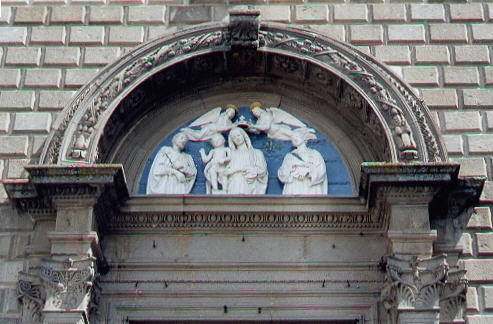 | ||
The left portal has a terracotta showing St Dominic and in line with the traditional iconography of the saints he is portrayed with the symbols of his martyrdom. The adjoining monastery has a small balcony, which recalls the Papal Loggia of Viterbo.
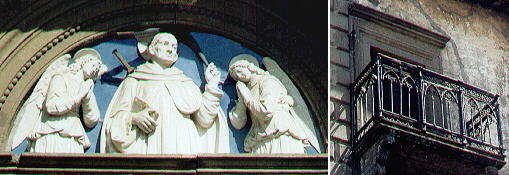 | ||
The gilded ceiling was designed by Antonio da Sangallo. The coat of arms of Paulus III was added at a later moment.
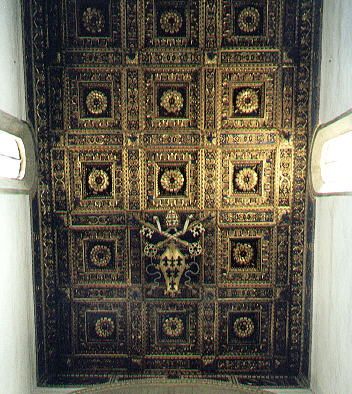 | ||
The main cloister shows a mixed architecture although it was built in a relatively short period of time. It was started in 1487 and the lower floor shows the influence of gothic architecture, while it was completed a few years later by a full Renaissance upper floor.
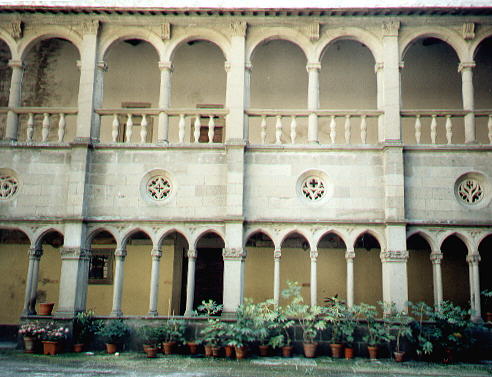 | ||
In and about Viterbo - other pages:
Viterbo
Bagnaia
Bagnoregio
Bomarzo
Orte and Vasanello
S. Martino al Cimino
Tuscania
Vitorchiano
Walks with Ferdinand Gregorovius in the Roman countryside
some other walks:
A walk to Porta Furba
Via Appia Antica from Cecilia Metella to Torre in Selci
Via Appia Antica from Torre in Selci to Frattocchie
See my Home Page on Baroque Rome or my Home Page on Rome in the footsteps of an XVIIIth century traveller
All images © 1999 - 2003 by Roberto Piperno. Write to romapip@quipo.it
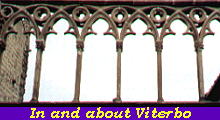 S. Maria della Querce
S. Maria della Querce